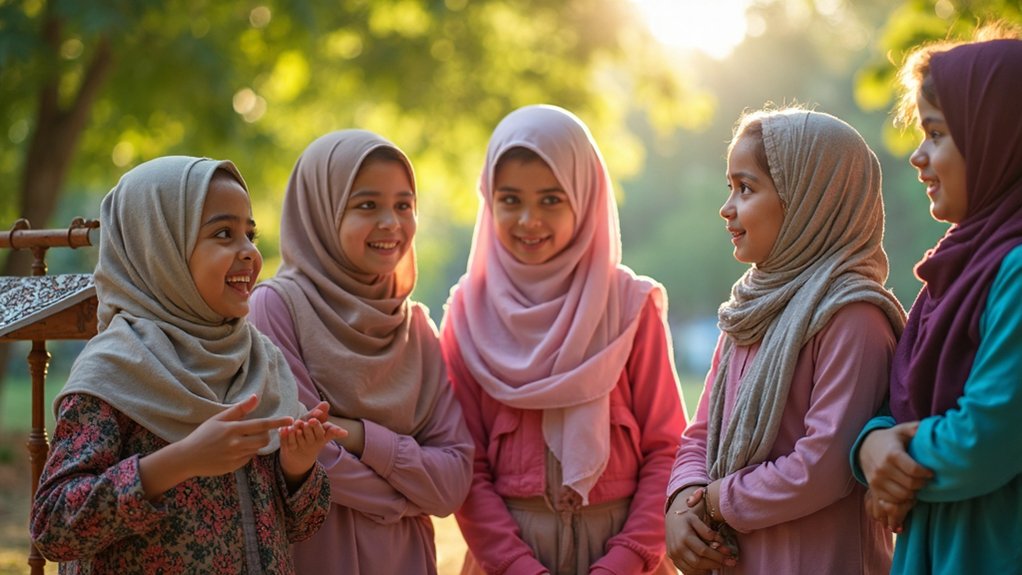
How Ramadan began: a historical guide for Muslims
Knowing the historical roots of Ramadan reveals profound transformations in the Muslim community—what events ignited this sacred month?

When talking about the hijab with girls, it’s important to use clear, supportive language that helps them understand its meaning. The hijab is more than just a piece of clothing—it represents a personal choice, as well as a symbol of faith and identity for many Muslim women. By explaining the hijab in a way that highlights its significance, you can help girls appreciate its value and purpose.

It’s also essential to address common misconceptions about the hijab. Many people may not fully understand why some girls and women choose to wear the hijab, so having open conversations can clear up confusion and encourage respect. Creating a safe space where girls feel comfortable asking questions about the hijab makes the discussion more meaningful and informative.
By focusing on the true meaning of the hijab, and repeating its importance as a personal and faith-based choice, you can communicate its richness in a way that is both accessible and engaging. Helping girls understand the hijab will empower them to make informed decisions and appreciate the diversity of traditions around them.
The hijab is much more than a simple head covering—it is a powerful symbol of faith and identity for many Muslim women. The concept of hijab centers on modesty, spirituality, and a deep connection to personal beliefs.
When you notice someone embracing the concept of hijab, recognize that it often reflects their commitment to their values and traditions. By understanding the concept of hijab, you can better appreciate the rich cultural and individual significance behind this meaningful expression.
When discussing hijab with girls, it’s important to highlight that wearing a hijab is a personal choice and a powerful form of empowerment.
Choosing to wear a hijab allows girls to express their identity and beliefs in a way that feels true to them.
By framing the hijab as a personal choice, you empower girls to make decisions that align with their values, boost their confidence, and celebrate self-expression.
Understanding the cultural and religious significance of the hijab is essential for appreciating its important role in the lives of many girls and women.
The hijab holds deep meaning, symbolizing faith, identity, and modesty. For many individuals, choosing to wear the hijab is a personal expression of their beliefs and a meaningful connection to their heritage.
By learning about the cultural and religious significance of the hijab, you can develop greater respect and understanding for those who wear it.
Embracing the cultural and religious significance of the hijab helps create a more inclusive and respectful community for everyone.
Many people have misconceptions about the hijab, which can lead to stereotypes and misunderstandings. One common myth is that the hijab is a symbol of oppression, but for many women, the hijab is actually a source of empowerment and personal choice.
Another misconception is that women who wear the hijab aren’t modern or educated. In reality, hijab-wearers come from all walks of life and are just as diverse and accomplished as anyone else.
Encouraging open conversations and questions about the hijab is essential for building understanding and respect. To help girls learn about the hijab, create a welcoming environment where they feel safe sharing their thoughts and asking questions.
When discussing the hijab, listen carefully and answer honestly, making sure to highlight both its cultural and personal importance. By encouraging open conversations and questions about the hijab, you help girls explore their feelings and experiences, leading to greater knowledge and acceptance.
Open conversations and questions about the hijab not only promote respect but also deepen everyone’s understanding.
Understanding hijab is an important step for girls who want to appreciate its true meaning and significance. The hijab is more than just a piece of clothing; it is a personal choice and a symbol of individuality and faith for many girls and women around the world. When you learn about hijab, you begin to see its beauty and the values it represents. Exploring both the cultural and religious aspects of hijab can help you gain a deeper perspective and break down any myths or misconceptions.
By encouraging open conversations about hijab, you foster respect and understanding, creating a supportive environment for everyone. Remember, every girl who chooses to wear the hijab has her own unique story, and embracing these differences helps you appreciate hijab as a meaningful expression of identity.

Knowing the historical roots of Ramadan reveals profound transformations in the Muslim community—what events ignited this sacred month?

Fasting during Ramadan fosters spiritual growth and community, but what deeper meanings and traditions lie beneath this sacred month? Discover the essence of Ramadan.

The Five Pillars of Islam shape faith and community, but how do they truly transform individual lives and society at large? Discover the impact within.

In exploring Islam vs. Muslim, discover the key distinctions that shape their identities and why understanding them is crucial for deeper insights.

Curious about the Islamic view of God? Discover the significance of Tawhid and how it impacts believers' lives and their connection to the world.

Learning about Islam's perspective on attending Christmas can reveal surprising insights, but what do these beliefs truly mean for interfaith relationships?